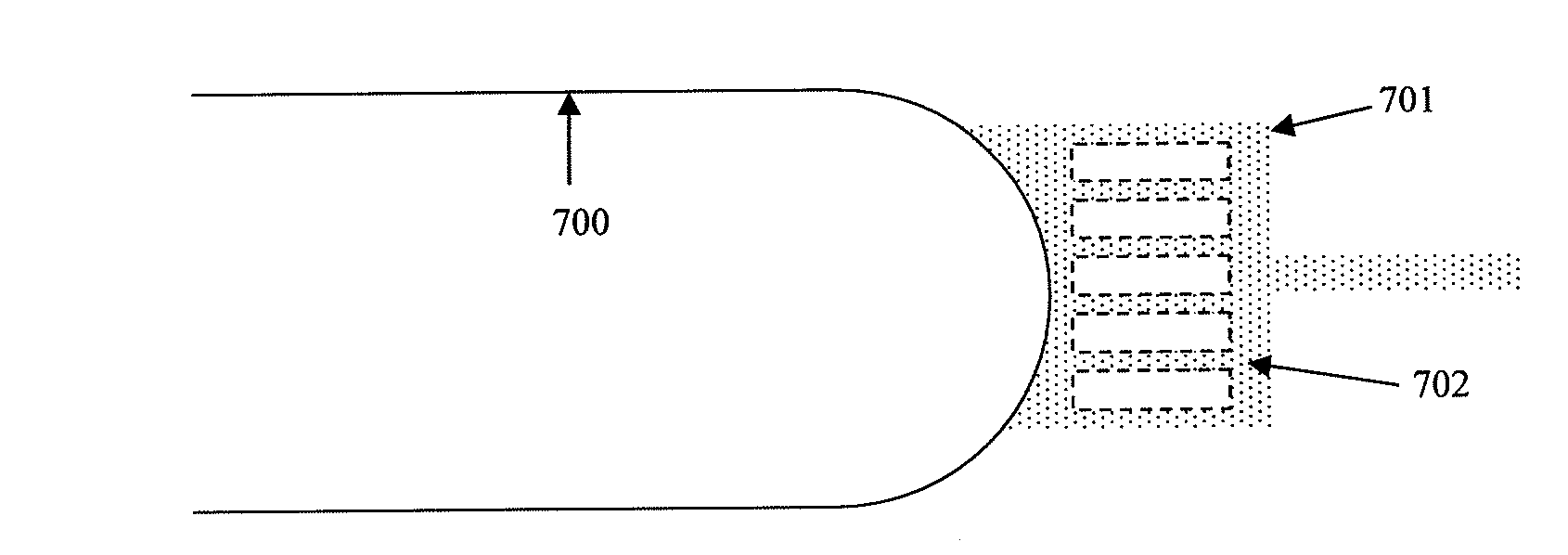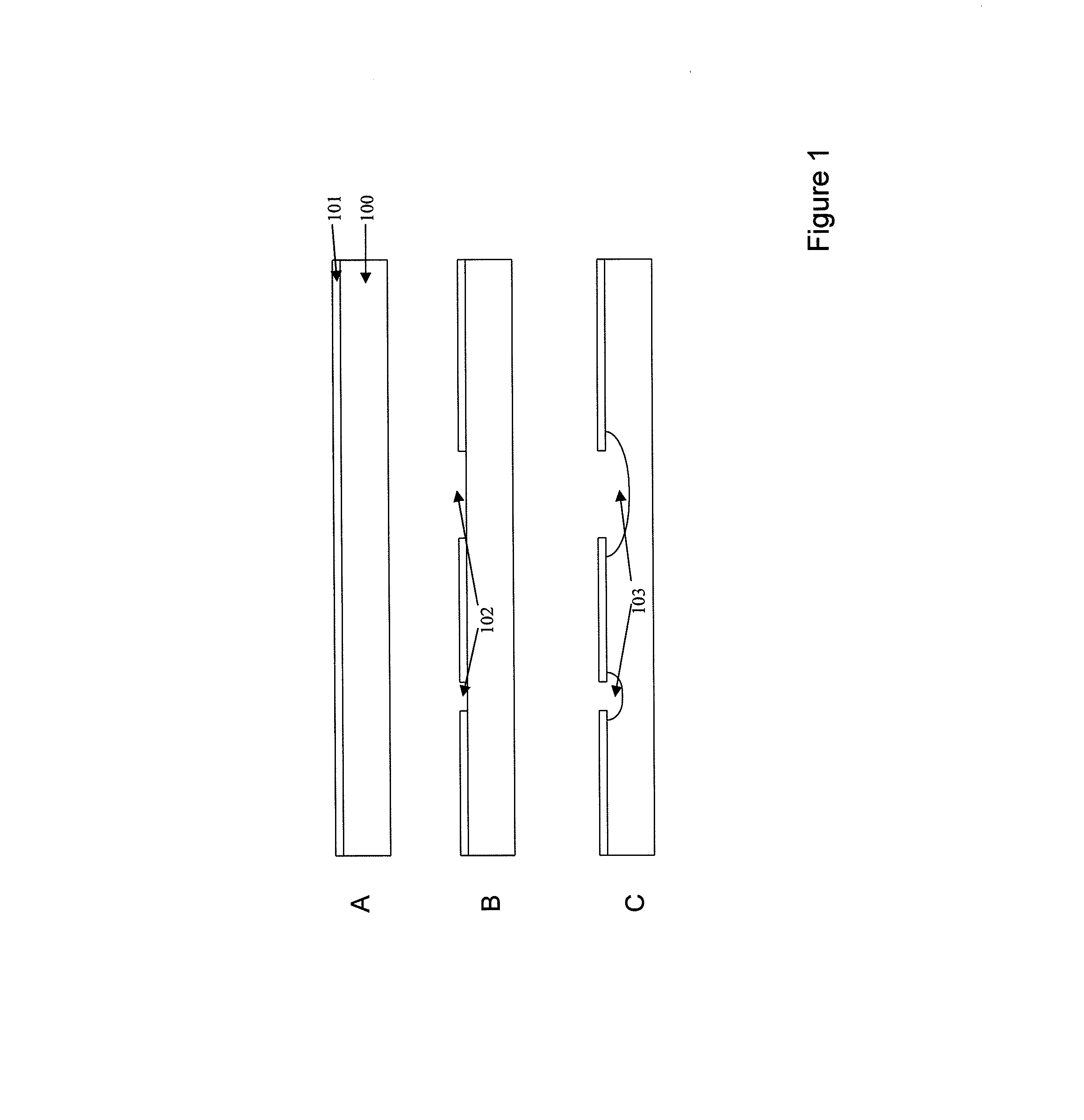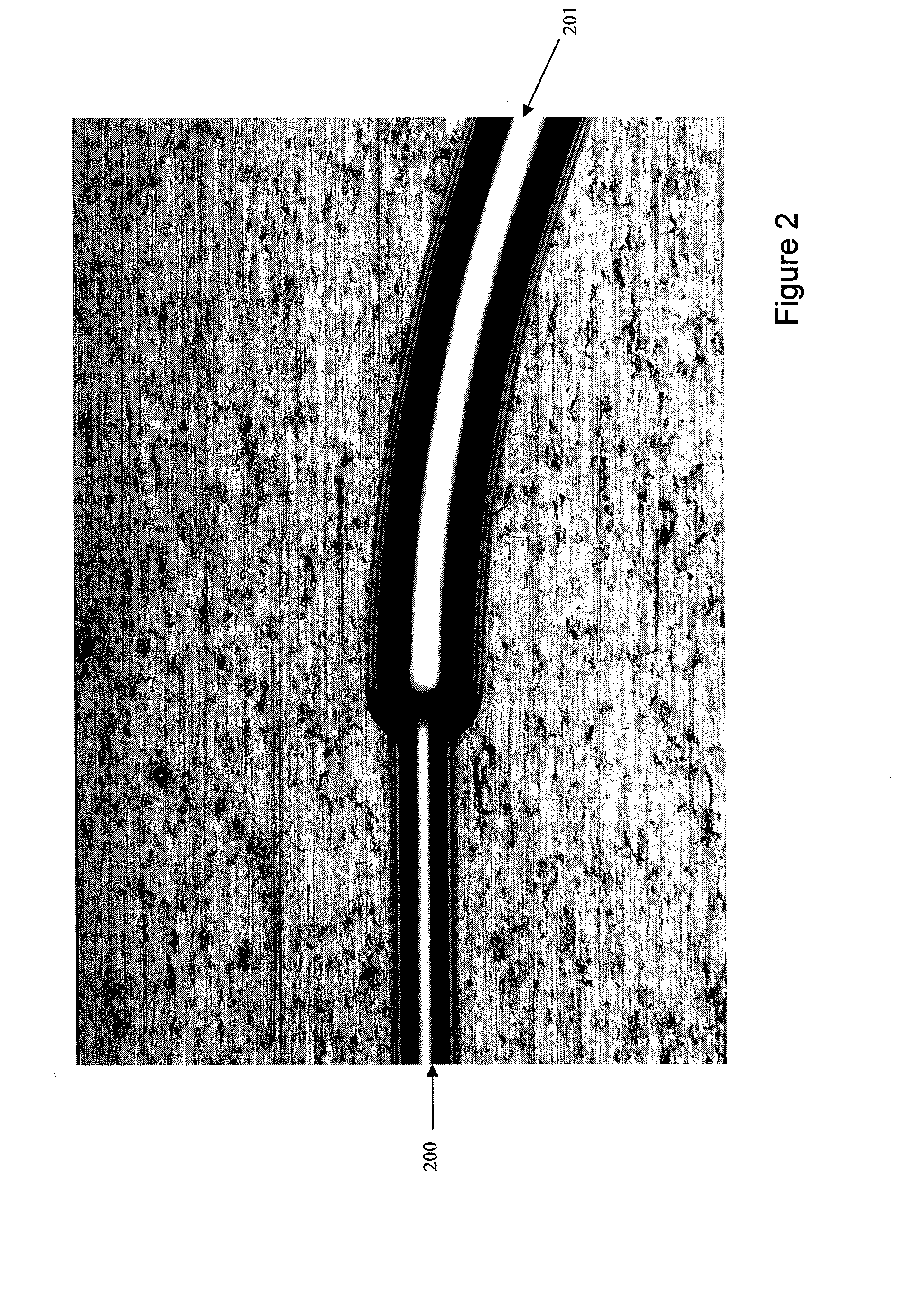Chromatography apparatus having diffusion-bonded and surface-modified components
- Summary
- Abstract
- Description
- Claims
- Application Information
AI Technical Summary
Benefits of technology
Problems solved by technology
Method used
Image
Examples
Example
[0077]In a first embodiment (shown in FIGS. 5A-5E), the channel that is to be packed terminates into a narrower channel that creates a restriction at which particles will be retained. A first photolithographic operation creates mask opening 500 (FIG. 5A). Electroetching through this opening creates channel 501, also shown in cross-section in 505 (FIG. 5D). A second photolithographic operation (FIG. 5B) creates a narrower mask opening 502. Electroetching through this opening creates narrow channel 503, also shown in cross-section in 506 (FIG. 5E). The shape and size of the two channels are determined by the width of the mask opening defined by photolithography and by the amount of electrical charge provided to the electrolytic cell by the electrical power supply. The depth of channel 506 can be made as small as 1 micrometer and can thus be a physical barrier for micrometer-size particles. However, such a shallow flow passage can easily be clogged by debris or precipitates from the so...
Example
[0078]In a second embodiment (shown in FIGS. 6A-6C), a mask opening 601 for the narrow channel is shifted slightly relative to the channel 600 by a small distance 602 (FIG. 6A). If this distance is determined appropriately, a neck 604 is created between channels 600 and 603 by electroetching through mask opening 602 (FIG. 6B). The gap between the top plane 605 of the metal sheet and the top of the neck 606 is ideally between 1 and 5 micrometers (FIG. 6C).
Example
[0079]In the third embodiment (shown in FIGS. 7A-7D), after the channel to be packed 700 is first made, with cross-section as seen in 705 (in FIG. 7C), a second photolithography operation creates a pattern 701 (FIG. 7A). The dotted area represents the open part of the mask (FIG. 7A), which is electroetched to form a shallow region 703 of depth 1-5 micrometers (FIG. 7B). The masked features 702 result in weir structures 704, which act as retaining structures for the particles. The plurality of weirs 704 reduces the risk of clogging or flow blockage. A cross-sectional view of weirs 704 is shown in FIG. 7D.
[0080]The outlet of a chromatographic separation column may be directed to the inlet of a mass spectrometer for analysis, a common technique for ionization of the liquid sample being the formation of a Taylor cone at the tip of electrospray nozzle, also commonly referred to as electrospray tip or emitter. In the case of planar microfluidic chromatographic devices, external, such as c...
PUM
| Property | Measurement | Unit |
|---|---|---|
| Temperature | aaaaa | aaaaa |
| Composition | aaaaa | aaaaa |
| Melting point | aaaaa | aaaaa |
Abstract
Description
Claims
Application Information
 Login to View More
Login to View More - R&D
- Intellectual Property
- Life Sciences
- Materials
- Tech Scout
- Unparalleled Data Quality
- Higher Quality Content
- 60% Fewer Hallucinations
Browse by: Latest US Patents, China's latest patents, Technical Efficacy Thesaurus, Application Domain, Technology Topic, Popular Technical Reports.
© 2025 PatSnap. All rights reserved.Legal|Privacy policy|Modern Slavery Act Transparency Statement|Sitemap|About US| Contact US: help@patsnap.com



